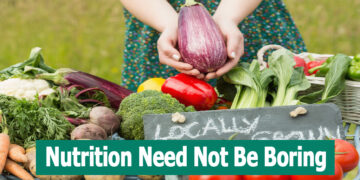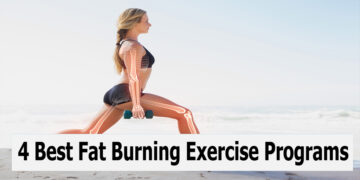Regardless of what you consider the perfect physique, a few characteristics generally come to mind for the vast majority of people. These include physical traits such as minimal body fat and a significant amount of lean muscle tissue.
Both of these details really tend to compliment a well-crafted physique. Having an optimal balance of lean muscle that is not obscured by a layer of adipose tissue is key for attaining the fit, athletic look that most people prefer.
As you have more than likely heard time and time again, building an aesthetic physique requires more attention to the foods you consume than the amount of time you spend working out. No amount of training can overcome a poor diet.
We are all familiar with the regulars at the gym who seem to be pushing themselves day in and day out, but never seem to look any different. If we were to have a glimpse into their lifestyle outside of the gym, noticing their dietary habits would explain this issue.
The focus of this article will be to discuss a few key nutrients you should be including in your diet that will allow you to maximize your valuable time spent working out so that you can achieve the physique you have in mind!
High-Protein, Low-Calorie Foods
The explanation behind the importance of these types of nutrients is relatively straightforward. For anyone looking to build lean muscle tissue, consuming an adequate amount of protein is key. Although the recommended daily protein intake for the average person is quite low (usually around 0.36 grams per pound of body weight), if you are regularly challenging your body during resistance training, the game is different. To really maximize how much muscle you gain from working out, shooting for 1-1.5 grams per pound of body weight is a must.
On the other end of this spectrum, common knowledge dictates that reducing the amount of excess calories you consume is a must if the goal is to minimize body fat. Any calories that you consume throughout the day that are not used for energy have to go somewhere. Unfortunately, adipose tissue is one of these locations.
So, how can you meet both of these needs in the middle? The good news is there are a lot of nutrient options that provide a large amount of protein relative to caloric content. Lean cuts of meat such as chicken, turkey and salmon are probably the most commonly mentioned staples. Other solid options include items such as quinoa, chickpeas and most protein powder supplements.
Fiber
Another great way to ensure you are keeping fat intake to a minimum when building muscle is to consume foods that keep you filling full for longer periods of time. This allows you to limit the total amount of calories you consume without being hungry and miserable all day! Foods that are high in fiber fit this description.
Lucky for us, fiber is found in basically every fruit and vegetable, making it easy to choose a source that you actually enjoy eating. Fiber aids in building a lean physique not only by keeping you full, but promoting optimal digestion so that you can avoid unsightly bloating and better absorb the other nutrients you consume.
Carbohydrates (At The Right Time)
When the topic of fat loss comes up, carbs are immediately portrayed as the enemy. While it is true that consuming too many carbs does cause body weight to increase, there is a time and place for them. Carbohydrates are the primary fuel source for the body, as long as they are burned during periods of intense exercise, they are unable to stick around and end up being stored as fat.
Timing is important when it comes to this nutrient. Your best bet is to focus on consuming most of your carbs when the body will really need them, such as right before and right after exercise.
The sources you turn to for carbohydrates are also important. Sure, a bag of Doritos has a ton of carbs, but I assume you realize this is not a viable option! Instead, focus on getting your carbohydrates from non-processed, healthier sources such as sweet potatoes and oats.



























